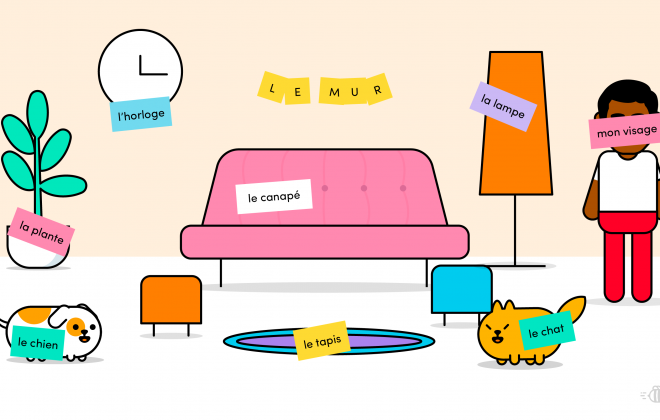How Can I Learn a Language at Home?
As the coronavirus pandemic rudely fences us into our homes, we are all attempting to keep a hold of normality as the world makes a clean break with it. The completion of simple tasks now requires the problem solving skills of a team of engineers. Our plans for work, study, travel, and, even our love lives, have been prorogued harder than the British Parliament. While it might seem that you have to abandon your language studies, if you take the right approach, you can still make solid progress.
Will my language learning progress be hindered by quarantine?
Now that your classes have been cancelled, the language school is closed, and you can no longer meet your tandem partner for coffee, it might seem that all progress is grinding to a halt. Language learning, however, requires a combination of approaches, and this crisis could give you the push you need to experiment with some approaches you have yet to try. When was the last time, for example, that you listened to a German-language podcast about the life of Bob Marley?
It’s true that you won’t hear the language spoken as you usually do – from your teacher and classmates. While YouTube can’t replace their physical presence, it can expose you to a wider range of contexts, situations and conversations than you would normally experience. From your (home) office chair you can tour the French city of Lyon, explore the culinary delights of Mexico, or watch interviews with Berliners going about their day.
Without the guidance and pressure you get in the classroom, you might worry that you won’t be able to find the right motivation. While you should certainly be conscious of falling prey to distraction, be aware that there are steps you can take, and tools you can use, to keep yourself on the learning path.
What are the benefits of learning at home?
Finding your WFH groove can take some time. It’s all about tuning into your own energy patterns. I work from home quite a lot, and it took me a while to figure out that I do my best work pretty much as soon as I wake up (after making coffee of course). I have friends and colleagues with completely different patterns – it’s about finding out what works best for you.
Once you have an idea of your own ‘energy schedule’, you can build a study schedule around it. This will really help when it comes to concentrating on things that are more cognitively demanding. This is where studying at home has an advantage over going to a class, as you can work out when you study best and then do so. On top of this, you no longer commute! Let’s celebrate that. These extra minutes each day can be spent lying in bed, sprawled on the sofa, or lent out of the kitchen window (each position where language study is possible, by the way).

How can I make home study a success?
There are two traps you will almost certainly fall into: procrastination and frustration. They can’t be avoided completely, but there are things you can do to reduce their effect.
First, you should organise your time. It’s too easy to lose track of your goals and the activities needed to reach them. Writing a list of learning to-dos will not only keep you on target, but will help remind you that your target is reachable. Part of the stress of quarantine is not knowing how long it will last. Spreading activities and goals over several days will help remove some of this uncertainty.
The second thing to ensure is variety in your study. Not for motivational purposes alone (although that’s important), but for the sake of being a well-rounded language learner. For me, this might include things like watching the news in German, doing spaced-repetition vocab study, listening to a German podcast, reading an article Deutsch Perfekt magazine, taking a Live Lesson with Chatterbug, sending a German friend a text message or two, and looking up some new words online.
Also, put your phone away. I keep mine on top of the fridge in the kitchen, and check it when I need to take a break and make a cup of tea.
What form should my planning take?
A study plan can be as simple or as detailed as you like. Think about what kind of plan will motivate you the most. A simple to-do list can help you to plan your day around your language study, to space out activities, and get you thinking about how long to spend on each. Once you have considered what one day looks like, you might consider making a longer plan that covers several days.
The fact that no two people organise their lives in the exact same way probably suggests that there is no best way to do it. Experiment until you find a system that works. One alternative to to-do lists is to keep a journal where you write at greater length about what you want to achieve, your motivation for achieving these things, and your feelings regarding progress. It might surprise you how much exploring your thoughts in writing helps to clear your mind and unblock paths to progress.

What does varied study look like?
Your mind is like that of a child’s. Children need novelty to keep their attentions fixed and so do you. Put down the grammar book and watch some YouTube. Don’t go through your flashcards for the fourth time, read some Instagram posts from the Berlin Zoo. You will be doing yourself a favour by varying the ways you interact with your target language. Let’s sum up your options:
Learning words
There are two kinds of vocab learner – the physical flashcard type and the digital flashcard type. Both ways have their advantages so it is down to you to choose. With app and online flashcard systems, however, you can more easily take advantage of spaced repetition. This is the science of testing you on words just as you are about to forget them so they move from your short term to your long term memory.
Listening to things
It’s hard to appreciate how important listening practice is, as its benefits happen largely without you noticing. Understanding what people say is half of what a conversation is so you will need to get up to speed. Fortunately, you don’t need to make it complicated for it to work – you just need to make a habit out of it, and get plenty of hours under your belt. BTW, watching counts as listening – see below.
Watching things
Screen time is happy time and you know it. If only you could get to the level where watching Netflix in German is as much fun as it is in your native tongue. Well, start small and you’ll get there. YouTube is a good place to start. Stick to short videos at first so to not to become overwhelmed too quickly. Unless you like that, in which case, go ahead.
Reading stuff
The practice of reading was once mainly limited to books, magazines, and textbooks. Now there is an almost unlimited variety of sources from tweets, posts and blogs, to advertisements, essays and opinions. Don’t be put off by the length of articles – if an article is too demanding you don’t have to read the whole thing.
Online classes
Advances in video conferencing technology has allowed the physical classrooms to move online, and several companies now offer you ways to attend language lessons from your computer at home. iTalki allows you to connect with freelance teachers around the globe. Chatterbug 1-to-1 classes use custom-designed lesson materials, and are a part of an integrated learning system. Lingoda provides 1-to-1 and group classes with downloadable materials.

If we were forced to self isolate 10 years ago, the advice here would be much different. The variety and quality of online education tools has grown so much that even face-to-face, teacher-student communication can be achieved from home. The decision about whether to learn with traditional or digital methods no longer needs to be based on the effectiveness of each, but rather on the personal preference of the student. Which one suits you best?
Want to learn more?
If you’re feeling inspired, sign up below for a free two-week trial and a Live Lesson with a private qualified tutor to start speaking a new language for real! Our classes are structured around exercises created by language teachers, so there’ll be no awkward silences – we promise! 😉
And don’t forget to check out our Facebook, Twitter and Instagram pages for more language content!



